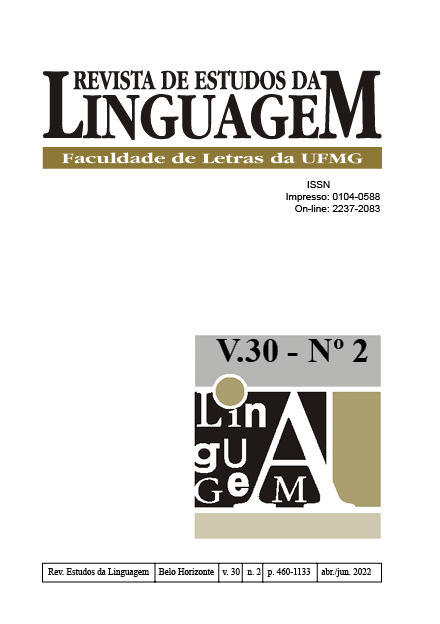A emergência da Interação Fictiva em sala de aula como estratégia de ensino e aprendizagem
DOI:
https://doi.org/10.17851/2237-2083.30.2.496-518Palavras-chave:
cognição, fictividade, interação fictiva, uso, sala de aulaResumo
Este artigo investiga manifestações específicas de fictividade, como padrão cognitivo de representações discrepantes (TALMY, 2000), em dados linguísticos orais coletados por Cadilhe (2013) de aulas ministradas em um curso de graduação em medicina. De modo mais específico, recorre-se ao conceito de Interação Fictiva (PASCUAL, 2014), segundo o qual os usuários das línguas lançam mão do Frame de Conversa para estruturar o pensamento, a gramática e o discurso, a fim de que se evidencie seu potencial de aplicação como estratégia comunicativa de ensino e aprendizagem. Como metodologia, lança-se mão da mescla das abordagens corpus-based e corpus-driven com o propósito de balancear categorias teóricas e empiria. Como resultado, mapearam-se quatro padrões formais e funcionais de fictividade em Interação Fictiva: pergunta-resposta fictiva, pergunta fictiva, dêixis fictiva e discurso direto fictivo. Verifica-se, sobretudo na fala docente, que a fictividade é usada com frequência em momentos discursivos de explicação e argumentação. Porém, docente e discentes demonstram saber operar com cenários não verídicos a fim de obter acesso a cenários efetivos que envolvem o cotidiano da prática médica. Constata-se ainda que o fenômeno é um dispositivo moderador do ensino e da aprendizagem, como uma estratégia comunicativa que apela para o Frame de Conversa no sentido de aproveitar o que ele tem de mais pervasivo e entrincheirado nos sujeitos cognitivos e de interação, que é a própria conversa cotidiana.





